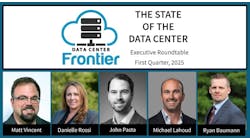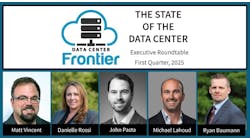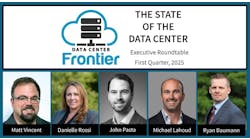Executive Roundtable: MegaCampus Considerations for Gigawatt Data Centers
At Data Center Frontier, we always like to ask the experts -- in this case, the four distinguished industry leaders featured in our Executive Roundtable for the Second Quarter of 2024.
Today we begin by asking for our experts' views on the most pertinent, front-of-mind considerations, whether geographic, regulatory or otherwise, for MegaCampus stakeholders -- including investors, developers, operators, partners, vendors, and customers -- in the presently emerging age of widespread gigawatt data centers.
In addition to today's discussion, in articles throughout the week, our panel of executive thought leaders will offer their observations on other topical industry considerations for the Second Quarter, including:
- Sustainability plays for the AI era in the industry's now ongoing level-up to global net zero and decarbonization goals.
- Top opportunities for any type of modular design innovation within or adjacent to hyperscale or colocation facilities, the better to measure up to escalating compute as well as grid and on-site power requirements for data centers.
- Discernible misconceptions and misperceptions surrounding the challenges to data centers entering the AI era and its related power availability and cooling concerns.
Our Executive Roundtable for the Second Quarter of 2024 pulls together seasoned data center industry leaders including:
Phillip Marangella, Chief Marketing and Product Officer, EdgeConneX
Ciaran Flanagan, Global Head of Data Center Solutions, Siemens
Joe Reele, VP Solutions Architects, Schneider Electric
Allen Rounds, Sales Executive, Kohler
Over the course of this week, we’ll moderate a Q&A with these experts on each one of the four roundtable topics. We begin today with our roundtable's takes on front-of-mind considerations for MegaCampus stakeholders in emerging age of widespread gigawatt data centers.
Data Center Frontier: To open the Second Quarter of 2024, Data Center Frontier's Founder and Editor at Large Rich Miller doubled down on a definitive call originally made in his annual industry trends forecast: The age of the gigawatt data center MegaCampus is truly upon us. From your perspective, what are the most pertinent front-of-mind considerations, whether geographic, regulatory or otherwise, for MegaCampus stakeholders including investors, developers, operators, partners, vendors, and customers?
Phillip Marangella, EdgeConneX: Not long ago, the entire Ashburn market represented a gigawatt. Now, we are seeing demand for gigawatt campuses in multiple markets worldwide, which shows how much demand is occurring globally for data center infrastructure.
The rapid emergence of AI’s capacity demands, added to an already robust data center market powered by the cloud, has turbocharged the need for super-scale data center campuses.
Of course, this will place many challenges on providers, from developing new data center designs that can also support the rapidly growing density requirements for AI, to raising the tens of billions needed to fund these builds -- and then coordinating the supply chain and delivery schedules to be able to deliver all of that capacity on time and on budget.
Buckle up. The Gigascale era is upon us.
Ciaran Flanagan, Siemens: For sure, the emerging gigawatt campus is indeed upon us, and the trend is being confirmed in several global regions as some very ambitious plans come to the market.
The basic proposition states that scale brings efficiency, and we know we will see that with this kind of facility, but there are some considerations.
Local support, from government and communities, is critical for a successful project at this scale. The ‘social value’ must be proactively addressed so that some of the practicalities of that scale don’t become roadblocks.
Beyond that, the scale needs to be considered in terms of how it impacts the local grid, water usage, and even something as specific as how many generators you need to back up that scale of power.
When a project of this scale is being contemplated, the site selection options are not so plentiful, so engaging the local community is indeed the key.
Joe Reele, Schneider Electric: I agree with Rich - the MegaCampus is a real thing!
Top of mind considerations are the ones most talked about, such as electrical utility availability.
Additionally, we’re seeing more and more investors, developers, and even end-users in some cases, working on the front end of the MegaCampus with both local governments and communities.
These groups are demonstrating and committing to good corporate citizenship and delivering added value to the local ecosystems. Any input with respect to ESG are impactful considerations when it comes to the MegaCampus.
Allen Rounds, Kohler: The biggest consideration for any new data center these days, especially a MegaCampus, is accessing grid-supplied power.
Simply put, the country’s power grid wasn’t built to provide the kind of volume that these new facilities require. This manifests itself in a couple of important ways.
For one, power is unavailable in many markets so interconnection wait times are years long and only getting longer.
For another, the grids themselves are becoming less reliable as they are pushed to new limits, so the frequency and duration of outages and disruptions are both getting longer.
These factors and more are contributing to the exploration of alternative power sources, new ways of working with utility providers, and an enhanced importance on bridging and backup power solutions. This is the primary challenge of developing a MegaCampus now and in the future.
Next: Sustainability Plays for the AI Era

Matt Vincent
A B2B technology journalist and editor with more than two decades of experience, Matt Vincent is Editor in Chief of Data Center Frontier.










